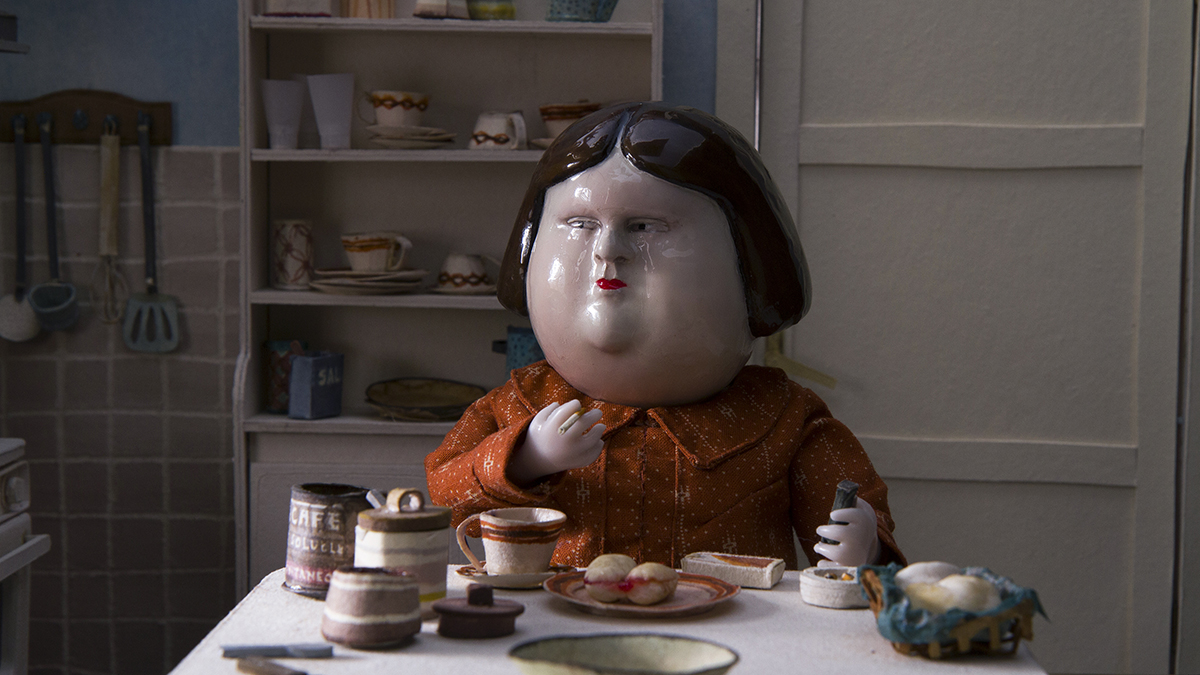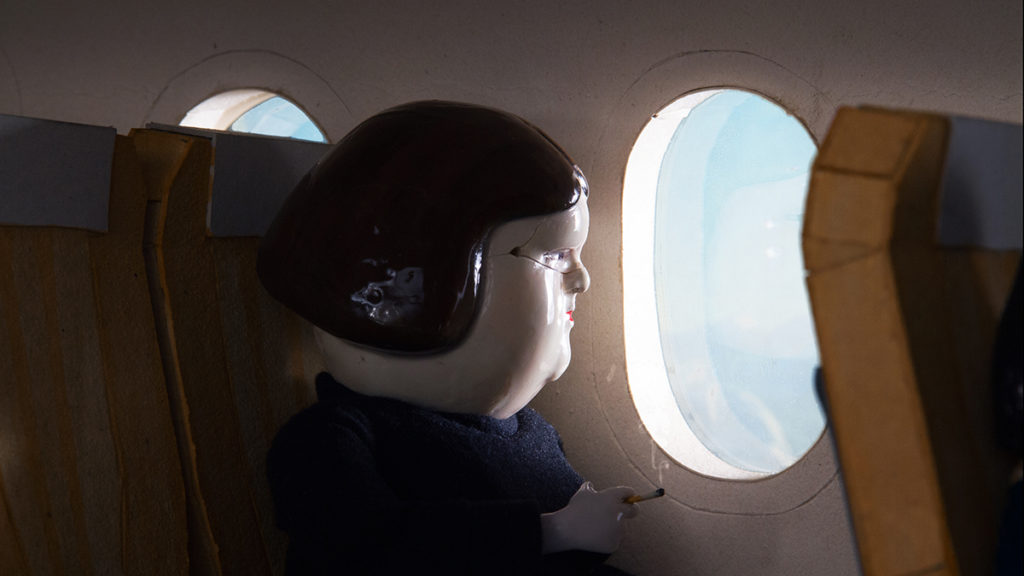Oscars 2022: ‘Bestia’ reveals monster within in examination of Chilean military dictatorship

Nominated for Best Animated Short Film, “Bestia” depicts the life of Chilean intelligence agent Íngrid Olderöck and her dark story under a military dictatorship. (Courtesy of Maleza Estudio)

By Ashley Kim
March 22, 2022 8:11 p.m.
This post was updated March 27 at 10:05 p.m.
A porcelain shell can’t contain a beast.
In “Bestia,” a short film co-written by Martín Erazo and director Hugo Covarrubias, the sinister violence of the Chilean military dictatorship is depicted using puppets made of porcelain and felt. The stop-motion short is nominated for an Academy Award for Best Animated Short Film and co-produced by alumni of the UCLA Extension Entertainment program. Inspired by a desire to portray lesser-known political figures in a series, the 15-minute film shows audiences the dark psychology behind Íngrid Olderöck, an intelligence agent who committed many violations of human rights during the military dictatorship in Chile, Covarrubias said.
“We realized in the interviews (we found during our research) that Íngrid Olderöck revealed many mental imbalances,” he said. “We thought those imbalances were the results of the system in which she was involved – a very totalitarian system that ends up driving its officials crazy and treats them as if they were a small pieces of a monstrous machine.”
[Related: Oscars 2022: Alumnus’s visual effects work brings ‘Spider-Man: No Way Home’ magic to big screen]
This history made for an intriguing story to tell, and Covarrubias said he wanted to make a short film that journeyed into the darkest parts of Olderöck. Co-producer and UCLA Extension alumnus Mariana Méndez said Chilean cinema is still inspired by the period of dictatorship that occurred from the 1970s to 1990, and the fracture in the country was a driving force behind the film. But packing the intense psychology of the main character into a 15-minute runtime was challenging and inspired a few key directorial decisions, Covarrubias said.
One such choice was the removal of any and all dialogue, which Covarrubias said urged the filmmakers to convey all of the story through the gestures performed by the puppets. This resulted in a reliance on the puppets themselves, the editing and the feeling that the music imbued in the audience for all of the emotional beats, he said. Music was essential to the directorial vision, Covarrubias said, because the tension that the sound provoked was necessary to embed the idea of a fractured country and broken woman into the minds of the audience. The idea of the broken woman is visually portrayed in the film by the crack along the porcelain face of her doll, said co-producer and UCLA Extension alumnus Marc Pannia.

“The opening scene and the closing scene are the same to represent this loop we live in of history repeating itself,” Pannia said. “There’s the shot of the puppet with a bullet in her head and then the crack in her head, which is literally the fragility of porcelain and her mind and the fracture in her mind. But it also … is a direct reflection of the state of the country. You can glue it back together, but it’s never going to be fully back to the way it was.”
Consequently, the material used to create the puppets and design the setting are key to understanding the greater themes that lurk in the background of the film, Méndez said. The porcelain head of the main character represents her stern nature juxtaposed with her fragility, she said. Such a contradiction worked not only aesthetically, but also symbolically, Covarrubias said, because it accomplishes the difficult task of guiding audiences to think about Olderöck’s frustrations and fears.
[Related: Oscars 2022: Q&A: UCLA alumnus discusses class stratification in futuristic short film ‘Please Hold’]
Making these artistic decisions and shooting an independent stop-motion animation film was an expensive process, Méndez said, and it is often more difficult than creating a feature because three acts have to be packed into a short run time. This film was a culmination of years of experience on short films, and Covarrubias said receiving the nomination was an emotional experience, having finished up the film amid the difficult circumstances of the pandemic.
“We hugged each other, we screamed and also we cried with emotion because it was a long and very significant process as a team and also as a country,” Covarrubias said. “We have to know those wounds and scars and try to understand why this happened in our history.”

